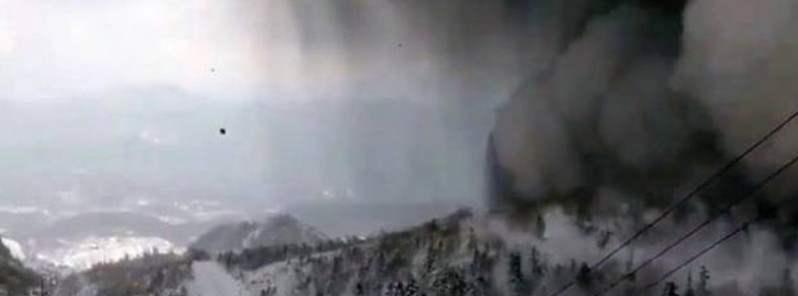Mount Kusatsu-Shirane erupts after 35 years of calm, leaves one dead and 18 injured

A sudden eruption took place at Kusatsu-Shirane volcano (Kusatsu-Shiranesan) in Japan early Tuesday, January 23, 2018, causing an avalanche that left one member of Japan's Self-Defense Forces (SDF) dead and 6 injured. At least 11 people were injured by falling volcanic rocks. It was the first eruption of this volcano since 1983.
The volcano, located near a ski resort in Gunma prefecture, erupted at 01:59 UTC on Tuesday (09:59 local time), spawning an avalanche that buried 6 soldiers and killed one, officials said. All 7 were transported to a hospital where one was later confirmed dead. SDF said at the time that the soldiers were training in the area when the volcano erupted and that they are trying to rescue about 80 people who were visiting the ski resort and evacuated to a ropeway station at the peak.
Falling volcanic rocks injured 11 people, local police said. At least 5 of them were injured after the stones hit a gondola lift, shattering its windows. The injured were treated at a rest house.
Observations by the Tokyo Institute of Technology have confirmed volcanic rocks about 1 km (0.62 miles) from the crater near Kagamiike pond, on Motoshirane peak. Some of the stones appeared to be 10 – 20 cm (3.9 – 7.8 inches) in size.
According to the Tokyo Electric Power Company, a power outage occurred near the ski resort after the eruption.
The Japan Meteorological Agency raised the volcanic alert level to 3, warning people not to approach the volcano. A large amount of ash is present in the area, the agency added, urging elderly, children and others in need of aid during evacuations to begin preparations to leave the area.
JMA said it did not observe any data showing heightened volcanic activity prior to the eruption.



Geological summary
The summit of Kusatsu-Shiranesan volcano, located immediately north of Asama volcano, consists of a series of overlapping pyroclastic cones and three crater lakes. The andesitic-to-dacitic volcano was formed in three eruptive stages beginning in the early to mid-Pleistocene.
The Pleistocene Oshi pyroclastic flow produced extensive welded tuffs and non-welded pumice that covers much of the east, south and SW flanks. The latest eruptive stage began about 14 000 years ago.
All historical eruptions have consisted of phreatic explosions from the acidic crater lakes or their margins. Fumaroles and hot springs that dot the flanks have strongly acidified many rivers draining from the volcano. The crater was the site of active sulfur mining for many years during the 19th and 20th centuries. (GVP)
Featured image: Kusatsu-Shirane volcano eruption on January 23, 2018.

Commenting rules and guidelines
We value the thoughts and opinions of our readers and welcome healthy discussions on our website. In order to maintain a respectful and positive community, we ask that all commenters follow these rules.